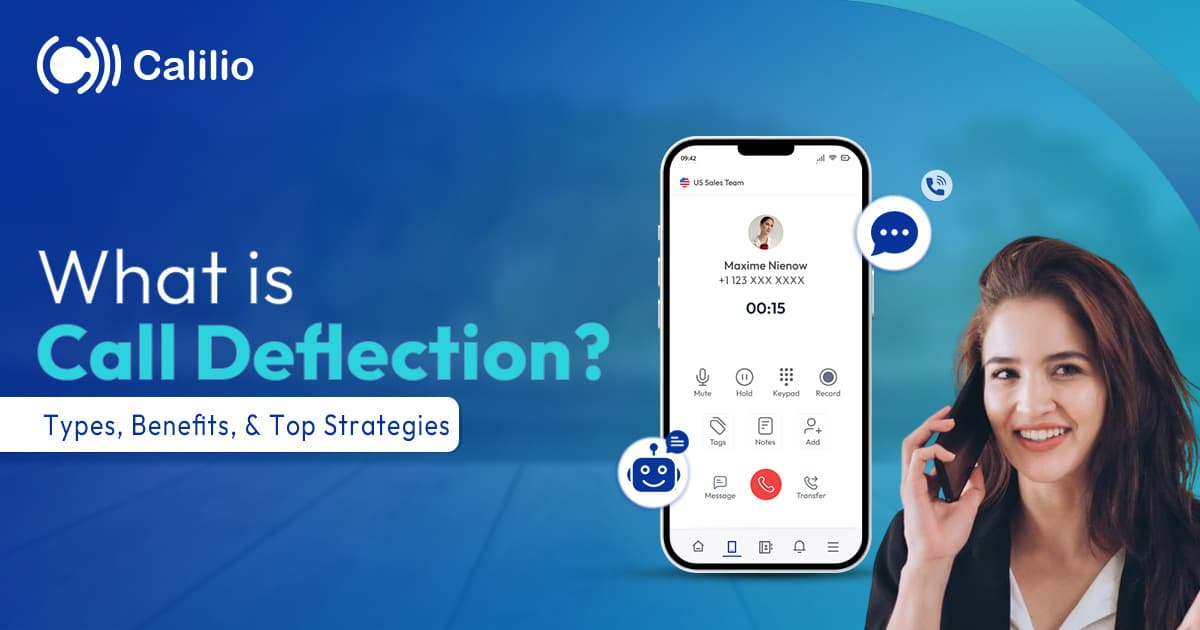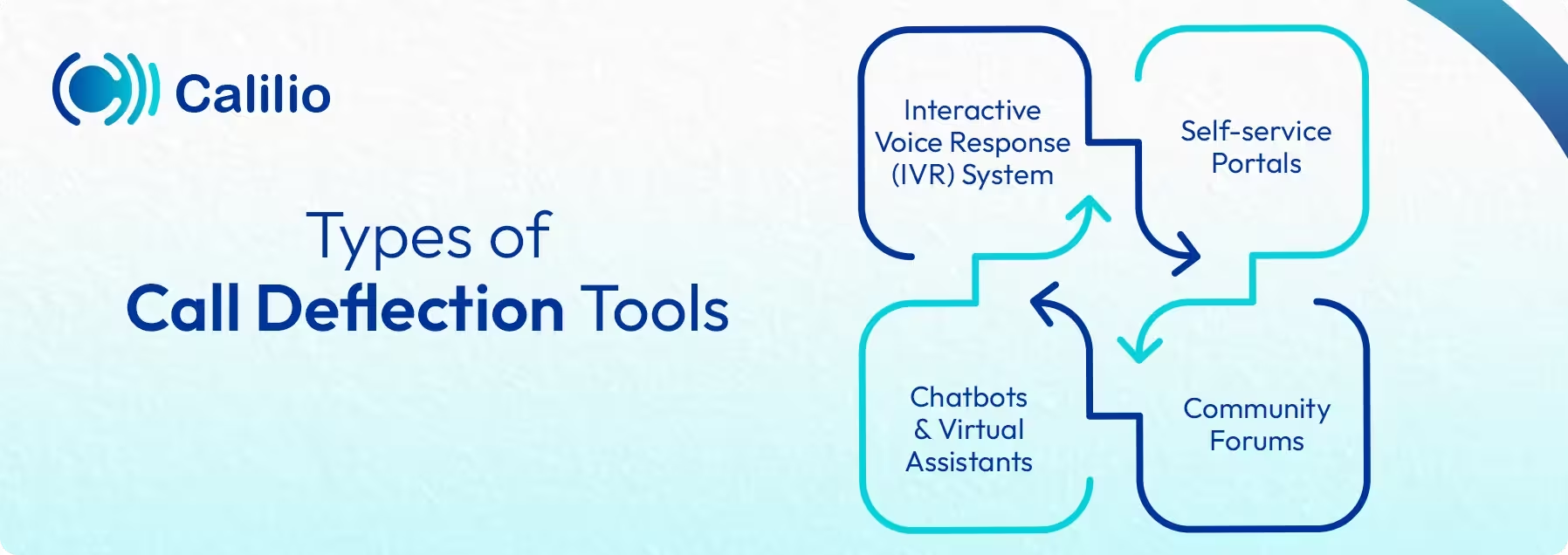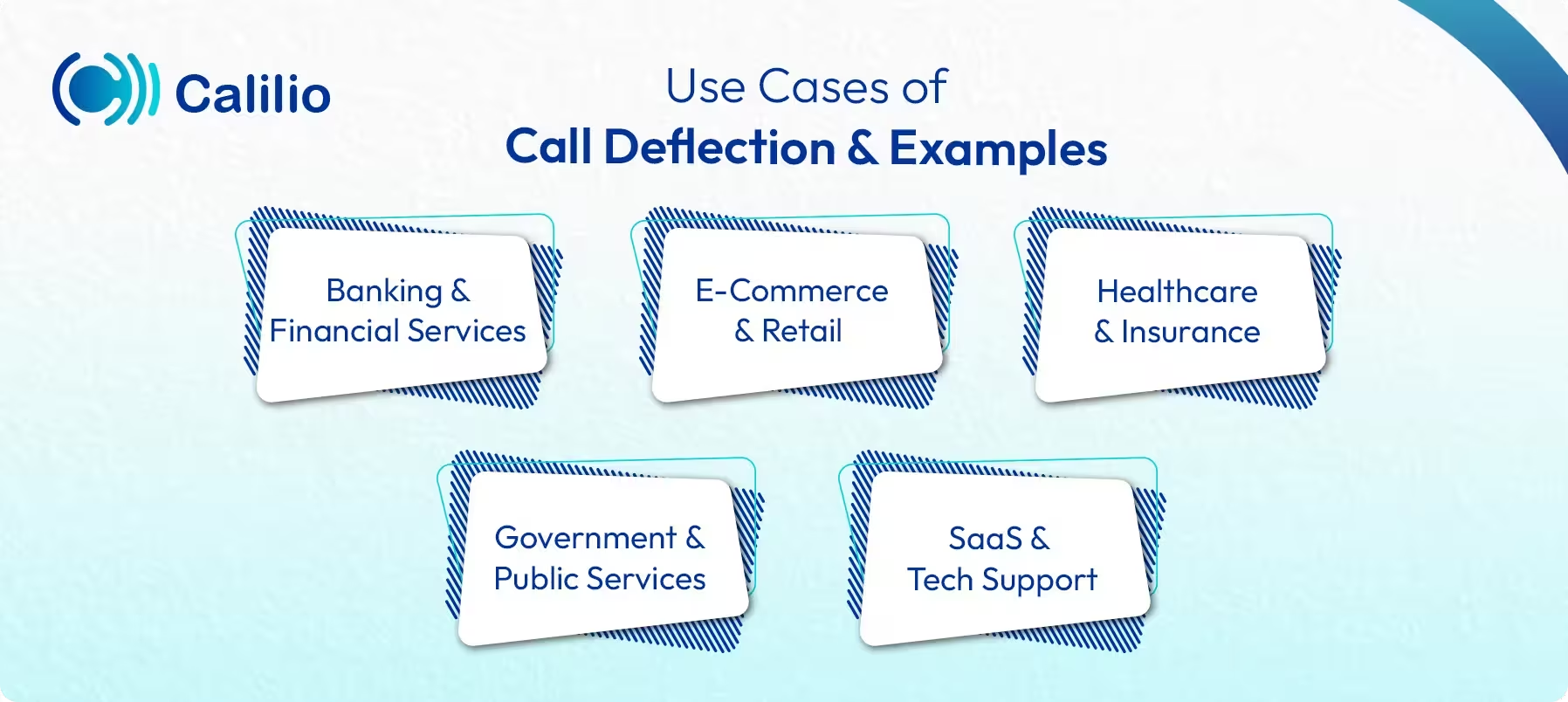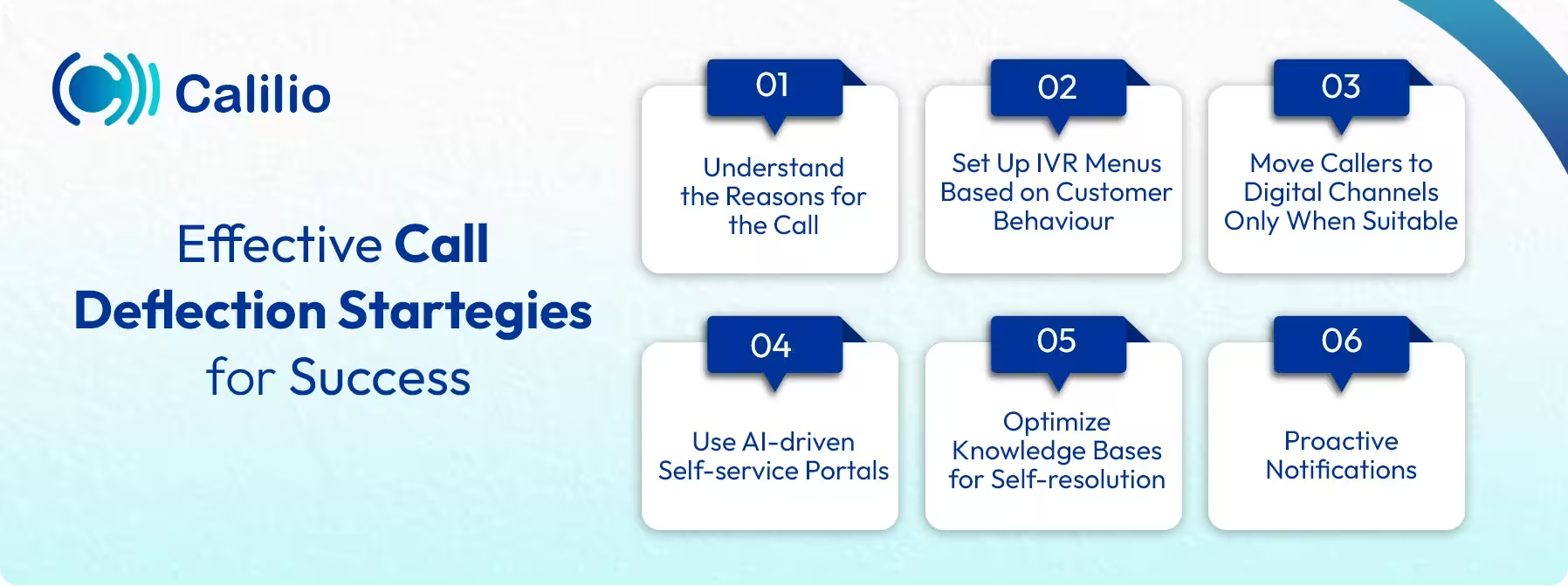Understanding Call Deflection: Meaning, Benefits, & Strategies

Customers today expect quick and convenient support. They don’t want to wait on hold for a long time to connect to a live agent.
Meanwhile, businesses are facing a growing challenge with high call volumes. Support teams are under constant pressure to respond quickly while still providing a good customer experience.
Call deflection provides a win-win solution for both sides. Customers can reach support through multiple channels and get their solution quickly. On the other hand, businesses can handle inquiries more efficiently, reduce wait times, and deliver a better customer experience.
In this blog, we’ll explore what call deflection is, including its benefits and disadvantages, and top strategies. You’ll also learn about call deflection rate and how to measure it to improve both customer experience and agent performance.
Key Takeaways:
Call deflection guides customers from phone calls to digital support options like chat, self-service, and FAQs.
By shifting routine inquiries to other channels, call deflection reduces call volume, lowers support costs, improves agent productivity, and speeds up service.
Call deflection rate measures how many inquiries are resolved without a phone call, showing how well digital support channels perform.
Effective call deflection offers easy-to-use self-service tools, clear IVR menus, and timely updates, so customers can get help through other channels instead of phone calls.
What is Call Deflection?
Call deflection is a technique to redirect customer service calls to digital or self-service channels, helping customers get quick support while reducing the overall call volume. It gives customers quicker ways to resolve simple questions through options like chatbots, live messaging, or knowledge bases or self-service, so they can find answers without waiting on hold for a live agent.
Types of Call Deflection Tools
Call centers use several tools for call deflection to redirect routine inquiries to faster, more convenient support channels. Some of the common call deflection tools include IVR systems, self-service portals, chatbots, and community forums.
- Interactive Voice Response (IVR) System: An IVR system is an automated phone menu that helps customers navigate through different options using voice commands or keypad inputs. Customers can access them through a company’s phone line.
- Self-service Portals: A self-service portal is a web-based platform where customers can manage their accounts, access FAQs, and troubleshoot issues. It’s usually available through a company’s website or mobile app.
- Chatbots and Virtual Assistants: Chatbots and virtual assistants are AI-driven tools that provide instant responses to common questions across chat, social media, or website interfaces.
- Community Forums: Community forums are online discussion spaces where customers can ask questions, share experiences, and find peer-driven solutions. Businesses usually maintain these forums on the company’s website.
How Does Call Deflection Work?
Call deflection works by redirecting customer inquiries from live agents to self-service options such as IVR menus, chatbots, FAQs, or automated help centers. It can be applied at various conversation points throughout the customer journey.
Here’s how it works across different touchpoints:
- At the beginning of a call: The system analyzes the customer’s intent and offers self-service options through IVR menus before connecting to a live agent.
- During a call hold: While waiting, customers are prompted with alternatives like FAQs or chatbot links via SMS or in-app messages, allowing them to find answers without staying on hold.
- At the end of a conversation: Once the main issue is resolved, the system can suggest related help articles or FAQ links through email or SMS, reducing future call volume by addressing follow-up questions proactively.
Deliver Faster, Smoother Support with Calilio’s Intelligent Cloud Phone System
Why Call Deflection Matters for Your Business: Key Benefits
Call deflection benefits both the customers and the business. While customers get quick resolutions, businesses can lower operational costs for handling call volume and improve agent efficiency.

Lower Call Volume
Call deflection routes incoming calls with simpler queries to self-service or conversational IVR. As such, only those queries that require a live agent will reach the phone line. This helps lower the call volume for your agents.
Reduced Support Costs
As simple and routine queries are handled through low-cost digital channels, it reduces the need for live phone agents. This helps businesses cut operating expenses while maintaining service quality.
Improve Agent Efficiency
When the call volume is low, the agents will be less burned out and have more free time. The agents can focus on more complex issues instead of repeating the same answers all day.
Faster Resolutions
Self-service tools, chatbots, and messaging channels can provide answers instantly, so customers don’t wait on hold for basic help. Contact centers can improve their call center metrics, including queue time, average answer time, and others.
Better Customer Experience
Customers can choose their preferred way to access the information and also avoid long wait times, while still getting faster resolution than a phone call. And for extreme cases, they can still reach a human agent for help, leading to a smoother and better support experience.
Disadvantages of Using Call Deflection
Call deflection can upset customers if they feel forced away from real help. Moreover, complex issues may take longer when bots handle them first, while automated replies can miss context and feel impersonal.
- Overuse causes customer frustration: When customers are repeatedly pushed away from live support, they may feel ignored and get annoyed.
- Longer resolution for complex issues: Complicated questions often need human assistance, so routing these to self-service first can delay answers and stretch out the process.
- Possible miscommunication: Voicebots and automated systems can misunderstand customer intent. This may lead to wrong responses, creating a negative customer experience.
- Impersonal or robotic interactions: Too much automation can make support feel cold and scripted. As a result, it impacts customer trust, reduces satisfaction, and makes customers feel unheard when they need human reassurance.
Use Cases of Call Deflection & Examples
Call deflection is used across various industries, including banking services, e-commerce and retail business, healthcare, government services, and SaaS and tech support companies. 
1. Banking and Financial Services
Banks can ease call volume by routing routine queries like balance checks, recent transactions, or loan status updates to mobile apps, automated IVR, or chatbots.
Example: A customer calls to check their account balance. The IVR system prompts them to enter their account number and PIN, then immediately provides the balance and recent transaction details.
2. E-Commerce and Retail
Retailers can redirect callers who want order tracking, return requests, or store information to self-service pages, chat support, or automated SMS links.
Example: A customer calls to check their order delivery status, and the system automatically sends an SMS containing a personalized tracking link. By clicking the link, the customer can view real-time updates, estimated delivery times, and initiate a return if needed.
3. Healthcare and Insurance
Healthcare and insurance providers can move inquiries about claim status, appointment booking, and benefit details to online portals or automated text replies.
Example: A patient calls to confirm their upcoming appointment. The hospital’s mobile app sends a notification with appointment details, and the patient can reschedule, view lab results, or pay directly in the app.
4. Government and Public Services
Government offices can direct residents looking to renew documents, check application status, or download forms to digital services. Citizens can get information even after business hours.
Example: A citizen calls to renew their driver’s license. The system sends an SMS link to the government’s online portal, where they can complete the renewal, upload required documents, and receive confirmation.
5. SaaS and Tech Support
Software companies can route users facing login problems, password resets, or simple setup tasks to help centers, guided tutorials, or chat. Support teams then have more time for product configuration, deeper troubleshooting, and customer onboarding questions, rather than spending time on these simple issues.
Example: When a user struggles to reset their password, the system sends an SMS with a secure link to the password reset page, guiding them step by step to regain access without contacting a support agent.
What is Call Deflection Rate?
Call deflection rate is the total number of customer inquiries solved through self-service channels such as IVR systems, FAQs, or chatbots. It shows how well your digital options are handling incoming calls without needing a live agent.
If the call deflection rate is high, it shows customers are finding what they need quickly and feel comfortable using digital channels instead of calling. And, if it’s low, it may be a sign that self-service tools, chat, or automation need updates.
How to Calculate the Call Deflection Rate?
You can calculate the call deflection rate by using the formula:
Call Deflection Rate (%) = (Self Service Resolutions / Total Customer Inquiries) x 100
For example:
Let’s say your support team gets 1,000 inquiries, and 300 are handled through self-service instead of calling in. Then,
Call Deflection Rate (%) = 300 / 1000 X 100 = 30
Therefore, your call deflection rate would be 30%.
Effective Call Deflection Strategies for Success
Successful call deflection begins with knowing what customers need and using smart IVR menus to guide them to quick answers. Businesses can also use AI-powered self-service tools and clear knowledge bases to solve issues faster and keep customers happy.
1. Understand the Reasons for the Call
First, analyze customer calls and find out the top reasons people call the support for. Look at call logs, feedback, and common topics. Once you identify the patterns, you can guide routine questions to self-service or chat.
2. Set Up IVR Menus Based on Customer Behavior
You need to optimize your IVR call flow to direct callers based on real needs and customer behavior. For example, if many callers ask about order status, give that as an option up front and transfer them to a tracking link or automated system before sending them to an agent.
3. Move Callers to Digital Channels Only When Suitable
Not every customer issue can be solved through automation. Make sure that if the issue is complex or sensitive, the customer connects to the live agent. If a caller has a simple question, you can guide them to your website, app, or chat tool. But while doing so, you also need to ensure that the hand-off is smooth so the customers do not feel pushed away.
4. Use AI-driven Self-service Portals
AI-powered portals guide customers to answers based on the question they type. Use this approach when customers need to perform repetitive tasks like password resets, account updates, or order tracking. However, the answers should be short, instead of requiring users to search through long pages. They must be able to get direct, clear steps to fix the issues.
5. Optimize Knowledge Bases for Self-resolution
Create a detailed knowledge base with articles that address common issues like setup guides, billing queries, troubleshooting steps, and product how-tos. The articles should be short, simple, and easy to navigate, with step-by-step instructions, screenshots, and straightforward examples to help customers quickly follow along and resolve their issues.
6. Proactive Notifications
Contact centers need to send updates before customers feel the need to call, like delivery alerts, outage notices, or payment reminders. Active notifications keep customers informed, build trust, and significantly reduce inbound calls for routine inquiries.
Conclusion
Call deflection plays a crucial role in modern customer support by guiding customers to digital channels for quick, self-service resolutions and reducing unnecessary inbound calls. It’s not about avoiding customer conversations; it’s about providing faster answers, creating smoother experiences, and building a more efficient contact center.
If you’re ready to implement effective call deflection and elevate your customer communication, Calilio can help. As a cloud-based business phone system with intelligent IVR and multichannel support, Calilio enables your customers to connect through chat, SMS, or email while freeing your agents to focus on complex issues. The result? Faster resolutions, happier customers, and a more productive support team.
No Tricks, Just Treats
Use Code CALILIOWEEN25 & Get A Spooktacular 10% Off Your Calilio Subscription. Start Your Savings Now!
Wicked Savings Of 10% Off With Code CALILIOWEEN25
Frightfully Affordable Virtual Numbers From - Just $2/month
The Most Hauntingly Affordable VoIP for Businesses
Powered by AI magic That’ll Cast A Spell On Your Calls


Frequently Asked Questions
What is the difference between call forwarding and call deflection?
Call forwarding sends a caller to another phone line where a person will answer, whereas call deflection sends the caller to a digital option like chat or self-service instead. While call forwarding keeps the interaction within live support, call deflection shifts it to automated options.
Which solution can be used to improve call deflection?

Still have questions?
Can’t find the answer you’re looking for? Please chat with our friendly team.
Stay in the loop
Get the latest call insights, trends, and updates delivered straight to your inbox.
By subscribing, you agree to receive updates from Calilio.
You can unsubscribe anytime.
